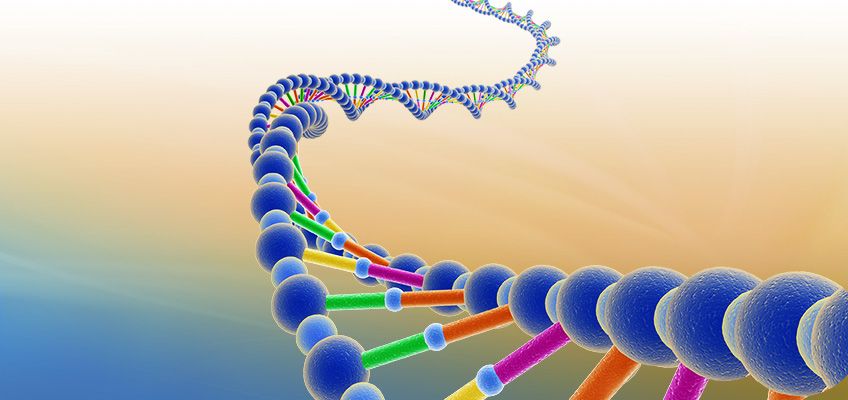Introduction to Recombinant DNA
Recombinant DNA (rDNA) technology refers to the direct manipulation of genes that involves combining DNA molecules from at least two different sources, creating sequences that would not otherwise be found in nature. By cutting and recombining DNA segments in the laboratory, scientists can generate molecules that have never before existed. This allows the production of large quantities of biologically active substances such as therapeutic proteins, vaccines, and diagnostic agents.
Cutting DNA
The first step in rDNA technology involves isolating DNA from the organism that contains the gene of interest. Restriction enzymes are then used to cut the DNA at specific locations known as restriction sites. Restriction enzymes recognize short, specific DNA sequences and cut both DNA strands at these sites, producing DNA fragments with sticky or blunt ends. The isolated gene is cut out from the organism’s DNA while leaving its regulatory and expression elements intact.
Insertion into a Vector
Vectors, such as plasmids or viruses, are used to transfer Recombinant DNA Technology fragments between cells. Restriction enzymes are also used to cut open the vector DNA at specific sites. The isolated gene fragment is then joined to the matching ends of a cut vector using DNA ligase, an enzyme that seals nicks in the DNA backbone. This produces a recombinant DNA molecule containing the gene of interest attached to the vector.
Transformation into a Host
The recombinant DNA vector is then inserted into a host cell through a process called transformation. Bacterial cells are commonly used as the host because they can be easily manipulated and reproduce rapidly. During transformation, the vector containing the gene of interest crosses the cell membrane and integrates into the host’s chromosome or persists independently as a plasmid. Only those host cells that take up recombinant DNA survive selection and further propagation.
Expression of the Inserted Gene
For the inserted gene to be useful, it must be expressed—that is, it needs to be converted into messenger RNA and then into a protein by the host cell. The choice of vector and host determines whether a gene will be expressed. For example, bacterial expression systems allow large quantities of protein to be produced. Eukaryotic vectors and cell lines are used when post-translational protein modifications are required. Gene expression is regulated at the transcriptional and translational levels by signals in the vector.
Applications of Recombinant DNA Technology
Therapeutic Protein Production
One of the earliest commercial applications of rDNA technology was the production of human insulin in bacteria. Diabetics who previously depended on scarce and expensive insulin extracted from animals could now be treated with biosynthetic human insulin. Many other therapeutic proteins like human growth hormone, clotting factors, and monoclonal antibodies are now manufactured in this way.
Vaccine Development
Recombinant vaccines consist of antigens produced using rDNA technology. Hepatitis B and HPV vaccines protect against viral illnesses through the administration of harmless viral proteins expressed in yeast or insect cells instead of weakened live viruses. Recombinant vaccines can offer improved safety and efficacy over traditional methods.
Agricultural Biotechnology
The “green revolution” in agricultural biotech uses rDNA techniques to generate genetically modified crops. Products include pest-resistant plants like Bt corn, drought-tolerant strains of major crops, and fruits and vegetables with enhanced shelf life. However, questions remain regarding the long-term environmental impacts of transgenic crop releases.
Forensic DNA Fingerprinting
Restriction fragment length polymorphism (RFLP) analysis and polymerase chain reaction (PCR) methods use rDNA technology for distinguishing individuals based on variable number tandem repeats in non-coding regions of DNA. Forensic DNA testing revolutionized criminal investigations by providing reliable identification of suspects from biological samples left at crime scenes. It has also aided in resolving paternity disputes, immigration issues and missing persons cases.
Gene Therapy
A long-term goal of rDNA research is to treat diseases at the genetic level through gene therapy. Strategies include inserting functional copies of defective genes into patient cells and tissues using viral or non-viral vectors. While early applications were beset by safety issues, gene therapy now shows promise for primary immunodeficiencies, retinal dystrophies and other inherited conditions. Challenges include developing safe, efficient vectors and regulating transgene expression.
The ability to isolate, manipulate and introduce genes between organisms gave birth to the new field of genetic engineering over four decades ago. Recombinant DNA technology has spawned a biotechnology revolution through applications like pharmaceutical production, transgenic crops, DNA forensics, and potential gene-based cures. As techniques mature and become safer, its role in addressing challenges in agriculture, health and environmental protection will likely continue expanding in the future.
*Note:
1. Source: Coherent Market Insights, Public sources, Desk research
2. We have leveraged AI tools to mine information and compile it.



